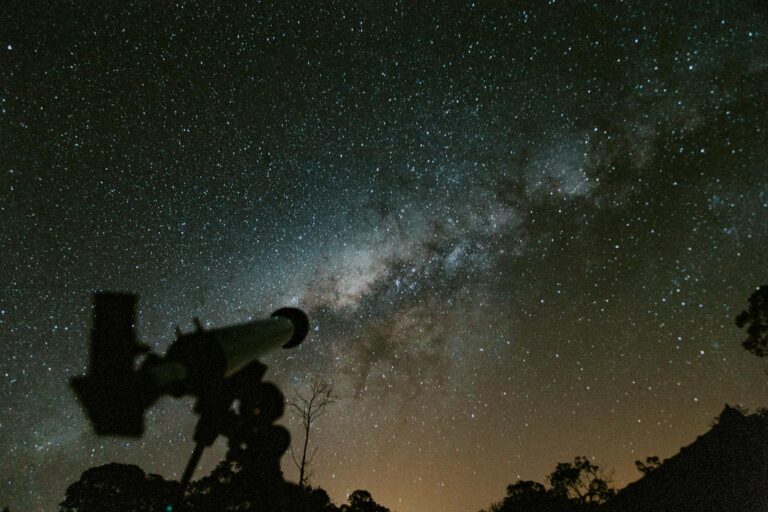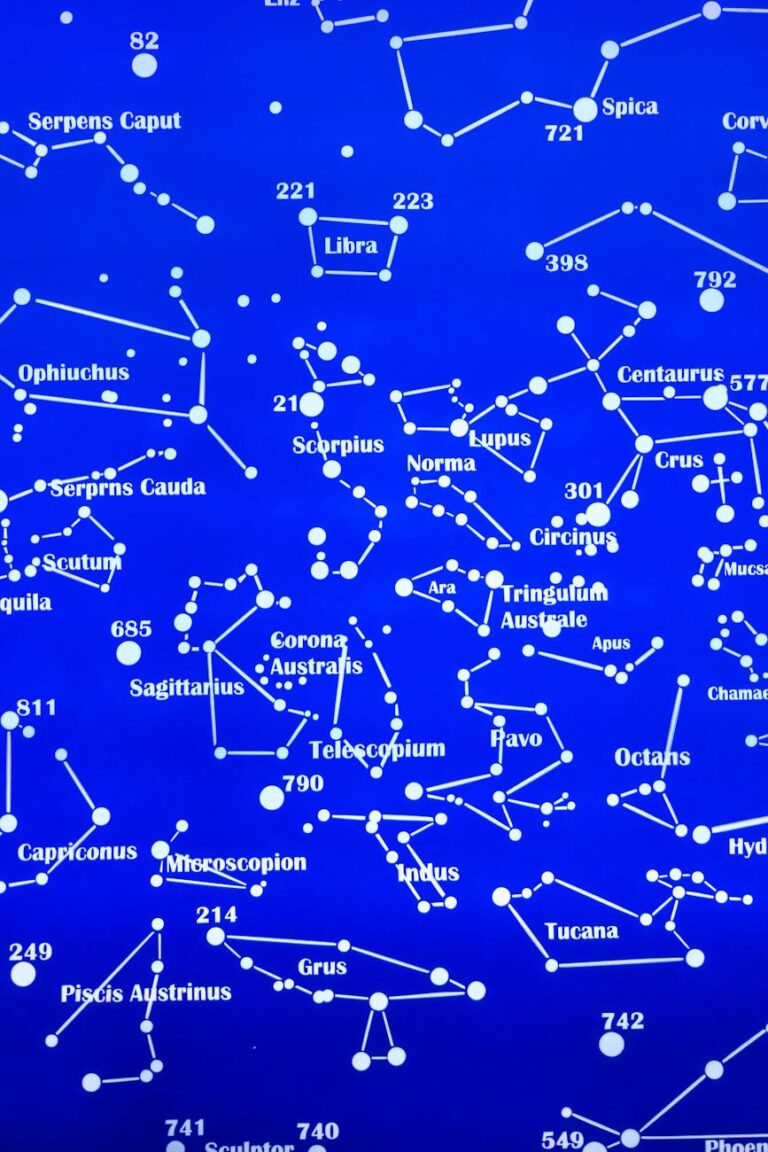Cosmic Drifters How Science Explores 3I/ATLAS Discoveries
Unveiling the Cosmos: How Science Coverage Explores the Biggest Breakthroughs and Strangest Discoveries with Interstellar Object 3I/ATLAS
Estimated Reading Time: 19 Minutes
Key Takeaways
- Interstellar comet 3I/ATLAS represents a crucial scientific breakthrough, offering direct insights into the formation and composition of other star systems.
- NASA’s unprecedented mobilization of astronomical resources highlights the power of collaborative science and strategic investment in fundamental research.
- Studying 3I/ATLAS provides invaluable data on exoplanetary building blocks, refining models of stellar/planetary formation, and holding astrobiological implications.
- Fundamental space exploration, driven by discoveries like 3I/ATLAS, acts as a powerful catalyst for innovation, leading to technological spinoffs and inspiring future generations in STEM.
- Future advancements in detection (e.g., Vera C. Rubin Observatory) and the potential for rendezvous missions promise even deeper understanding of cosmic evolution.
Table of Contents
- Unveiling the Cosmos: How Science Coverage Explores the Biggest Breakthroughs and Strangest Discoveries with Interstellar Object 3I/ATLAS
- The Cosmic Wanderer: Why 3I/ATLAS is a Scientific Marvel
- NASA’s Grand Mobilization: A Testament to Collaborative Science
- The Power of Space Telescopes
- Ground-Based Observatories: The Eyes on Earth
- The Human Element: Global Collaboration and Data Science
- Capturing the “Ghostly Beauty”: The Technology Behind the Images
- Imaging and Photometry
- Spectroscopy: The Fingerprint of the Cosmos
- Astrometry: Charting the Interstellar Path
- Beyond Aesthetics: Deciphering 3I/ATLAS’s Secrets
- Clues About Other Protoplanetary Disks
- Refining Models of Stellar and Planetary Formation
- Astrobiological Implications: The Seeds of Life?
- The Ripple Effect: Interstellar Discoveries and Innovation
- Technological Spinoffs: From Space to Earth
- Inspiring the Next Generation: Fueling the Talent Pipeline
- Economic Impact: The Space Economy and Beyond
- Strategic Importance: Maintaining Scientific Leadership
- The Future of Cosmic Exploration: What’s Next?
- Improved Detection and Tracking
- The Dream of Rendezvous Missions
- Connecting the Dots: Exoplanets and Cosmic Evolution
- Frequently Asked Questions (FAQs)
- Conclusion
In the boundless expanse of the cosmos, discovery often arrives unannounced, shattering our preconceived notions and expanding the very limits of human understanding. At our team, science coverage explores the biggest breakthroughs and strangest discoveries across space, physics, biology, archaeology, health, and beyond, continually pushing the boundaries of human understanding. Rarely, however, does a discovery encapsulate so much wonder, challenge, and opportunity as the fleeting visit of an interstellar object – a true cosmic wanderer from another star system. Such was the case with 3I/ATLAS, an enigmatic comet that captivated the scientific community and prompted an unprecedented mobilization of Earth’s most advanced astronomical resources.
When 3I/ATLAS first registered on our celestial radars, it wasn’t just another comet. It was a messenger from beyond, a pristine sample from the chaotic infancy of another star system, hurled across light-years to offer us a glimpse into worlds we can only dream of reaching. NASA, recognizing the profound scientific opportunity, marshaled virtually every resource at its disposal, from orbiting observatories to powerful ground-based telescopes, to capture every possible shred of data from this fleeting visitor. The result? Never-before-seen images that reveal the comet’s “ghostly beauty” and promise to unlock secrets about the universe’s grand architecture.
For business professionals, entrepreneurs, and tech-forward leaders, this isn’t merely an astronomical curiosity. It’s a testament to the power of collaborative innovation, long-term strategic investment in research and development, and the profound impact that fundamental science has on technological advancement and the human spirit of exploration. This article delves into the significance of 3I/ATLAS, the remarkable scientific effort to study it, and why such “strangest discoveries” are, in fact, “biggest breakthroughs” that resonate far beyond the realm of astrophysics.
The Cosmic Wanderer: Why 3I/ATLAS is a Scientific Marvel
To truly appreciate the significance of 3I/ATLAS, we must first understand what makes an “interstellar object” so profoundly special. Our solar system is a vast, bustling neighborhood, home to planets, dwarf planets, asteroids, and comets, all gravitationally bound to our Sun. For billions of years, astronomers have observed countless comets, most of which originate from the Kuiper Belt or the Oort Cloud – icy reservoirs at the fringes of our solar system. These objects are invaluable for understanding the conditions under which our own planets formed.
An interstellar object, however, is fundamentally different. It’s a celestial body that originated in an entirely different star system, was ejected from its home by gravitational interactions, and has since journeyed through the vast, empty expanse between stars before serendipitously passing through our cosmic neighborhood. The mere existence of such objects confirms theoretical predictions about the ejection of planetesimals during the formation of planetary systems.
Prior to 2017, the concept of interstellar visitors was purely theoretical. That changed dramatically with the discovery of ‘Oumuamua, the first confirmed interstellar object, followed by 2I/Borisov in 2019. These discoveries sparked immense excitement, offering the first direct evidence of material from other star systems. However, both were discovered relatively late in their trajectories through our solar system, limiting the extent of their observation.
3I/ATLAS, in this lineage, presented a unique and unprecedented opportunity. While its full designation ‘3I’ confirms it as the third such interstellar visitor detected, the circumstances of its discovery and subsequent observation allowed for a more comprehensive study than its predecessors. Unlike ‘Oumuamua, which was initially classified as an asteroid due to its lack of cometary activity, 3I/ATLAS clearly displayed a coma and tail, characteristic of a comet. This distinction is crucial: comets are typically more pristine remnants of their birth nebula, rich in volatile materials that can reveal the chemical fingerprint of their distant stellar nursery. Its early detection meant that astronomers could prepare and deploy a full arsenal of observational tools, allowing for sustained, detailed scrutiny. This opportunity to study a comet from another star system, rich in potentially untouched primordial material, represents one of the “strangest discoveries” of our era, precisely because it offers a “biggest breakthrough” in understanding the formation and evolution of planetary systems beyond our own.
Studying 3I/ATLAS provides direct insights into:
- The Building Blocks of Other Worlds: What are exoplanetary systems made of? Are the raw materials similar to those that formed our Sun and planets, or are there exotic differences?
- Planetary Formation Processes: How common is the ejection of material from nascent star systems? What gravitational dynamics lead to such events?
- The Chemical Diversity of the Galaxy: Does life-essential chemistry exist uniformly across the galaxy, or are there vast regional differences in molecular abundances?
Each fragment of light, every spectral line captured from 3I/ATLAS, is a direct data point from an alien cosmic cradle, offering an invaluable counterpoint to our solar system’s own story. It’s a literal piece of an alien jigsaw puzzle, promising to fill in crucial gaps in our cosmic picture.
NASA’s Grand Mobilization: A Testament to Collaborative Science
The phrase “NASA threw virtually everything it’s got at this interstellar visitor” is not hyperbole; it underscores an extraordinary level of scientific coordination and technological deployment. When a discovery of this magnitude is made, the scientific community doesn’t just react; it mobilizes with an urgency born of fleeting opportunity. Interstellar objects move at incredible speeds, often observed only for weeks or months before they recede back into the interstellar void, lost to our telescopes forever. Every second counts.
This grand mobilization involved a sophisticated network of observatories, each contributing its unique strengths to form a comprehensive observational campaign. It’s a symphony of scientific endeavor, where diverse instruments play in harmony to extract maximum data.
The Power of Space Telescopes
Orbiting above Earth’s atmospheric distortion, space telescopes offer unparalleled clarity and access to wavelengths of light blocked by our atmosphere.
- The Hubble Space Telescope (HST): For decades, Hubble has been the workhorse of space astronomy, famous for its stunning visible-light images. Its ability to resolve fine details and capture faint objects makes it ideal for imaging the comet’s coma and tail structure, revealing dynamics and morphology with unprecedented precision.
- The James Webb Space Telescope (JWST): Though the summary doesn’t explicitly mention JWST, its infrared capabilities would be invaluable for similar future observations, or may have been used for spectroscopic analysis if the object was detectable within its operational parameters. JWST excels at detecting molecular signatures in faint, cold objects, providing crucial data on volatile compositions – the very essence of a comet. It can peer through dust to identify specific ice compositions and organic molecules, which would be challenging for visible-light instruments. The potential for JWST to analyze the chemical composition of an interstellar comet would revolutionize our understanding of its origins.
Ground-Based Observatories: The Eyes on Earth
Despite the advantages of space telescopes, ground-based observatories remain indispensable, primarily due to their sheer size and adaptability.
- Large Optical and Infrared Telescopes: Giants like the Keck Telescopes, the Very Large Telescope (VLT), and the Gemini Observatory were almost certainly enlisted. Equipped with adaptive optics, these telescopes can actively compensate for atmospheric blurring, achieving near space-quality images. Their large mirrors gather immense amounts of light, crucial for observing distant and faint objects like 3I/ATLAS.
- Radio Telescopes: While less likely for direct imaging of a small comet, large radio arrays could potentially detect molecular emissions in the comet’s coma, providing another layer of compositional data.
- Dedicated Survey Telescopes: These automated telescopes constantly scan the sky, often being the first to detect such transient phenomena. Projects like Pan-STARRS (which discovered ‘Oumuamua) and the upcoming Vera C. Rubin Observatory play a vital role in the initial detection and tracking, triggering the rapid response of larger, more specialized instruments.
The Human Element: Global Collaboration and Data Science
Beyond the hardware, the mobilization involves hundreds, if not thousands, of scientists, engineers, and data analysts across the globe. Teams from different institutions and countries collaborate, sharing data, expertise, and computational resources. This rapid, cross-disciplinary effort highlights the “breakthroughs” not just in technology, but in the collaborative model of modern science. Data streams from various observatories need to be quickly processed, calibrated, and analyzed, often requiring advanced computational algorithms and machine learning techniques to extract meaningful information from noisy signals. This urgent, coordinated response is a testament to the power of a shared scientific vision and the fundamental drive to understand our place in the universe.
Capturing the “Ghostly Beauty”: The Technology Behind the Images
The summary mentions “never-before-seen images of 3I/ATLAS capture the comet’s ghostly beauty.” This isn’t just about pretty pictures; it’s about extracting profound scientific data hidden within those photons. The “ghostly beauty” refers to the ethereal glow of the coma and the faint, wispy tail – the tell-tale signs of a comet’s volatile nature, roused by the warmth of our Sun. Capturing this required a suite of sophisticated techniques.
Imaging and Photometry
Direct imaging, primarily in visible and near-infrared light, allows astronomers to:
- Visualize Morphology: See the shape of the coma (the nebulous envelope around the nucleus) and the structure of the tail(s). Is it a single tail, or are there distinct dust and ion tails? How do they evolve over time? These clues provide insights into the comet’s activity level and composition.
- Measure Brightness (Photometry): By tracking changes in the comet’s brightness, scientists can infer its rotation period, the rate at which it’s expelling gas and dust, and even estimate the size of its nucleus. A sudden increase in brightness might indicate a fresh outburst of volatiles.
Spectroscopy: The Fingerprint of the Cosmos
Perhaps the most powerful tool for studying comets is spectroscopy. Instead of just capturing light, a spectrograph splits the light into its constituent wavelengths, much like a prism. Each element and molecule emits or absorbs light at specific, unique wavelengths, creating a “fingerprint.”
- Chemical Composition: By analyzing the spectral lines from 3I/ATLAS, scientists can identify the types of gases (e.g., water, carbon monoxide, methane, ammonia, cyanide) and dust particles present in its coma. This provides a direct chemical inventory of material from another star system. Are these compositions similar to comets from our own Oort Cloud, or do they reveal exotic materials unique to its distant birthplace?
- Temperature and Velocity: The width and shift of spectral lines can also reveal the temperature of the gas and its velocity relative to us (Doppler effect). This helps understand the dynamics of the comet’s outflow.
Astrometry: Charting the Interstellar Path
Astrometry is the precise measurement of the positions and movements of celestial objects. For an interstellar object, this is paramount:
- Confirming Interstellar Origin: By accurately tracking 3I/ATLAS’s trajectory over time, astronomers can calculate its orbit. If its orbit is unbound (hyperbolic) with respect to the Sun, it confirms its interstellar origin. This calculation requires extremely precise positional data from multiple observations over several weeks or months.
- Understanding its Journey: The trajectory can also offer clues about where it might have come from in the galaxy, though tracing back its exact star of origin is usually impossible due to gravitational perturbations over millions of years.
The synergy of these technologies allows scientists to piece together a comprehensive picture of 3I/ATLAS – not just what it looks like, but what it’s made of, how it behaves, and where it truly came from. This deep dive into its characteristics goes far beyond simple observation; it’s about decoding a cosmic message encoded in light.
Beyond Aesthetics: Deciphering 3I/ATLAS’s Secrets
The “ghostly beauty” of 3I/ATLAS is captivating, but the real scientific payoff lies in decoding the secrets it carries. Each piece of data, from its composition to its trajectory, contributes to a larger cosmic narrative, allowing science coverage explores the biggest breakthroughs and strangest discoveries that redefine our understanding of the universe.
Clues About Other Protoplanetary Disks
The most immediate and profound impact of studying 3I/ATLAS is the direct insight it provides into the conditions within other protoplanetary disks – the swirling clouds of gas and dust where planets are born around other stars.
- Elemental and Molecular Ratios: If 3I/ATLAS exhibits a significantly different abundance of certain elements or volatile molecules (like carbon-rich vs. oxygen-rich materials) compared to our own solar system’s comets, it could indicate fundamentally different chemical environments in its home system. This would challenge assumptions about the universality of planetary formation processes.
- Pristine Samples: Because 3I/ATLAS has spent vast amounts of time in the frigid vacuum of interstellar space, far from any star, its interior is likely to be remarkably pristine. It’s a time capsule, preserving the exact chemical makeup of its birthplace, untainted by the millions of years of solar radiation and processing that our solar system’s comets have undergone.
Refining Models of Stellar and Planetary Formation
Every new data point from an interstellar object helps refine our theoretical models of how stars and planets form and evolve.
- Frequency of Ejection: How often are objects ejected from planetary systems? The more interstellar visitors we detect, the better we can estimate the efficiency of this process. This, in turn, influences models of planet formation, suggesting how much material might be “lost” from a system versus incorporated into planets.
- Dynamic Interactions: The very act of ejection requires strong gravitational interactions within a nascent star system, perhaps involving migrating giant planets or close encounters with other stars in a cluster. Studying the statistics and characteristics of interstellar objects helps constrain these dynamic models.
Astrobiological Implications: The Seeds of Life?
Perhaps the most tantalizing aspect of cometary science, whether solar system or interstellar, lies in its implications for astrobiology – the search for life beyond Earth. Comets are known to be rich in organic molecules, including amino acids, the building blocks of proteins.
- Universal Chemistry: If 3I/ATLAS carries a similar suite of complex organic molecules to those found in our own comets, it strengthens the hypothesis that the basic ingredients for life are widely distributed throughout the galaxy. It suggests that the chemical prerequisites for abiogenesis might be a common occurrence wherever planets form.
- Panspermia: While speculative, the idea of panspermia suggests that life or its precursors could be spread between star systems via ejected objects. While 3I/ATLAS itself is unlikely to harbor living organisms due to the harshness of space, its composition could inform debates about the viability of such a mechanism.
By delving deep into the physical and chemical characteristics of 3I/ATLAS, astronomers are not just observing a distant object; they are engaging in a form of cosmic archaeology. They are sifting through the remnants of a primordial epoch in another star system, piecing together a story that began billions of years ago and continues to unfold across the vast stage of the Milky Way. This is how “science coverage explores the biggest breakthroughs and strangest discoveries” – by transforming cryptic data into profound understanding.
The Ripple Effect: Interstellar Discoveries and Innovation
For business leaders, entrepreneurs, and those at the forefront of technological advancement, it might seem that studying a distant comet has little direct relevance to quarterly reports or market trends. However, this perspective overlooks the profound, long-term ripple effect that fundamental scientific exploration has on innovation, technology, and society itself. The study of 3I/ATLAS, like all ambitious space science, acts as a powerful catalyst for progress, embodying how science coverage explores the biggest breakthroughs and strangest discoveries to inspire future innovations.
Technological Spinoffs: From Space to Earth
The “everything NASA threw” at 3I/ATLAS represents a concentrated effort to push the boundaries of current technology. This drive inevitably leads to innovations with terrestrial applications:
- Advanced Imaging and Sensors: The development of highly sensitive detectors, adaptive optics, and precise image processing algorithms for astronomical observations often finds applications in medical imaging, remote sensing for environmental monitoring, industrial inspection, and even smartphone camera technology.
- Data Science and AI: Managing and analyzing the torrent of data from multiple observatories requires cutting-edge data analytics, machine learning, and artificial intelligence. These computational methods, refined for celestial mechanics and spectral analysis, are directly transferable to big data challenges in finance, healthcare, logistics, and personalized marketing.
- Materials Science: The extreme conditions of space demand materials that are lightweight, durable, radiation-resistant, and able to withstand vast temperature swings. Innovations in these areas – for spacecraft, telescopes, and instruments – frequently find their way into high-performance materials for automotive, aerospace, defense, and consumer electronics industries.
- Precision Engineering: Building instruments capable of tracking a faint, fast-moving object across billions of miles requires unparalleled precision in optics, mechanics, and electronics. This expertise trickles down to manufacturing processes, robotics, and micro-engineering.
Inspiring the Next Generation: Fueling the Talent Pipeline
Beyond direct technological transfers, space exploration holds an undeniable power to inspire. The stories of interstellar objects, black holes, and the search for alien life captivate imaginations, particularly among young people.
- STEM Education: Such discoveries are powerful hooks for attracting students to Science, Technology, Engineering, and Mathematics (STEM) fields. This ensures a robust pipeline of skilled professionals who will drive future innovation and economic growth.
- Curiosity and Critical Thinking: Scientific exploration fosters a culture of curiosity, problem-solving, and critical thinking – essential attributes for innovators and leaders in any field. It teaches us how to ask difficult questions, design experiments, analyze data, and adapt to unexpected results.
Economic Impact: The Space Economy and Beyond
The space industry itself is a rapidly growing sector, driven by government agencies and increasingly by private enterprise.
- New Ventures: The advancements spurred by fundamental research lead to new companies specializing in satellite technology, space tourism, asteroid mining, and advanced data services.
- International Collaboration: Large-scale scientific projects, like the observation of 3I/ATLAS, often involve international partnerships, fostering diplomatic ties and shared economic benefits.
- Long-Term Vision: Investing in fundamental research demonstrates a commitment to a long-term vision, something that resonates with business leaders focused on sustainable growth and future-proofing their organizations. It’s a powerful metaphor for exploring new markets and pushing beyond existing boundaries.
Strategic Importance: Maintaining Scientific Leadership
For nations and global communities, leadership in scientific exploration translates directly to geopolitical influence and economic competitiveness. Being at the forefront of discoveries like 3I/ATLAS showcases a nation’s intellectual capital and technological prowess, attracting talent and investment.
Ultimately, the study of 3I/ATLAS underscores a critical truth: fundamental science is not a luxury, but a necessity. It’s an investment in humanity’s future, driving innovation, inspiring generations, and expanding the very fabric of our knowledge. For business professionals, understanding this connection is key to appreciating the broader ecosystem of progress and identifying opportunities where scientific breakthroughs can translate into tangible value.
The Future of Cosmic Exploration: What’s Next?
The fleeting visit of 3I/ATLAS serves as a potent reminder that our universe is dynamic, full of surprises, and endlessly fascinating. It also sets the stage for the future of cosmic exploration, pushing the boundaries of how science coverage explores the biggest breakthroughs and strangest discoveries. The lessons learned from this interstellar visitor will undoubtedly shape upcoming missions and observational strategies.
Improved Detection and Tracking
The experience with ‘Oumuamua, Borisov, and 3I/ATLAS has galvanized efforts to improve our ability to detect interstellar objects earlier and track them more effectively.
- Vera C. Rubin Observatory: This next-generation survey telescope, currently under construction, will conduct the Legacy Survey of Space and Time (LSST). It will image the entire visible sky every few nights with unprecedented depth and speed. It is expected to detect several interstellar objects per year, offering a continuous stream of new data and opportunities for follow-up studies.
- Machine Learning and AI: Sophisticated algorithms are being developed to rapidly distinguish potential interstellar objects from the vast number of solar system asteroids and comets detected by surveys, reducing false positives and accelerating confirmation.
The Dream of Rendezvous Missions
While currently a distant prospect, the ultimate goal for some scientists is a dedicated mission to an interstellar object.
- “Project Lyra”: Conceptual studies, such as the privately funded Project Lyra, are exploring the feasibility of sending a spacecraft to intercept a future interstellar visitor. This would require extremely high-speed propulsion technologies, such as solar sails or nuclear-powered electric propulsion, and rapid deployment capabilities.
- In-Situ Analysis: Imagine a probe not just observing from afar, but flying past or even landing on an interstellar comet, performing direct chemical analysis, and capturing high-resolution images of its surface. Such a mission would represent the pinnacle of interplanetary science, offering unparalleled insights into the composition and evolution of extraterrestrial matter.
Connecting the Dots: Exoplanets and Cosmic Evolution
The study of interstellar objects like 3I/ATLAS is intrinsically linked to the rapidly expanding field of exoplanet research. As we discover thousands of planets orbiting other stars, objects like 3I/ATLAS provide direct, albeit small, samples from these distant systems. They help bridge the gap between theoretical models of exoplanetary systems and actual physical evidence.
As science coverage explores the biggest breakthroughs and strangest discoveries, we are constantly reminded that the universe is far more intricate and interconnected than we ever imagined. From black holes and dinosaur bones to fusion energy and mRNA vaccines, we dig into how the universe works, how science shapes our world, and where it collides with politics. The journey of 3I/ATLAS, from an unknown star system to our cosmic doorstep, epitomizes this spirit of boundless discovery. Science has never mattered more—and we’re here to make sense of it.
Frequently Asked Questions (FAQs)
Q1: What exactly makes 3I/ATLAS “interstellar”?
A1: An object is classified as interstellar if its trajectory (orbit) is “hyperbolic” with respect to the Sun. This means its speed is too high for the Sun’s gravity to capture it, indicating it is not gravitationally bound to our solar system and instead originated from another star system, passing through our solar system on its way back to interstellar space. The “3I” in its name signifies it’s the third confirmed interstellar object.
Q2: How rare are interstellar objects like 3I/ATLAS?
A2: Observing them is rare because they are small, faint, fast-moving, and only pass through our solar system briefly. So far, only three (Oumuamua, Borisov, and ATLAS) have been definitively identified. However, theoretical models suggest that many more pass through our solar system unnoticed, indicating they are likely common throughout the galaxy but challenging to detect. Future, more powerful survey telescopes are expected to find them more frequently.
Q3: What does “ghostly beauty” mean in the context of a comet?
A3: The “ghostly beauty” refers to the faint, ethereal appearance of a comet’s coma and tail. As a comet approaches the Sun, its ice vaporizes, creating a hazy atmosphere (coma) around its nucleus and often forming a tail of gas and dust. This glowing, often translucent appearance, visible only with sensitive instruments or long exposures, gives it a “ghostly” quality against the dark backdrop of space, while its unique structure makes it beautiful to observers.
Q4: What specific technologies were crucial for observing 3I/ATLAS?
A4: A combination of advanced space-based and ground-based telescopes were crucial. Space telescopes like the Hubble Space Telescope provided high-resolution imaging free from atmospheric distortion. Large ground-based optical and infrared telescopes, often equipped with adaptive optics (to correct for atmospheric blurring), provided immense light-gathering power for spectroscopy and astrometry. Sophisticated data processing algorithms and global collaboration between scientific teams were also vital.
Q5: How does studying comets from other star systems help us understand the universe?
A5: Interstellar comets are pristine samples of material from other star systems. By analyzing their chemical composition, astronomers gain direct insights into:
* The building blocks of planets and stars beyond our solar system.
* The chemical diversity across the galaxy.
* The processes by which planets form and materials are ejected from nascent star systems.
* The potential prevalence of organic molecules (precursors to life) in other cosmic environments.
Q6: What is the long-term goal of such observations?
A6: The long-term goals are manifold:
* To build a comprehensive inventory of interstellar objects to understand their distribution and characteristics.
* To refine models of stellar and planetary formation and evolution across the galaxy.
* To contribute to the field of astrobiology by understanding the availability of life’s building blocks in different star systems.
* To advance astronomical instrumentation and data analysis techniques.
* Ultimately, to answer fundamental questions about how the universe works and our place within it.
Conclusion
The fleeting passage of 3I/ATLAS through our solar system was more than just a momentary cosmic spectacle; it was a profound scientific event. It pushed NASA and the global scientific community to mobilize an unprecedented array of technological and intellectual resources, demonstrating the pinnacle of human ingenuity and collaborative spirit. The never-before-seen images and invaluable data captured from this interstellar comet represent a significant “breakthrough,” offering direct insights into the chemical makeup and physical processes of a star system far beyond our own.
For business professionals, entrepreneurs, and tech-forward leaders, the story of 3I/ATLAS is a compelling narrative about the return on investment in fundamental research. It highlights how the relentless pursuit of “strangest discoveries” in basic science leads to the “biggest breakthroughs” that cascade into technological advancements, inspire future generations, and fuel economic growth. The innovations in imaging, data science, materials, and global collaboration, born from the urgent study of a distant object, have tangible applications that drive progress across countless industries.
At our team, we believe that science coverage explores the biggest breakthroughs and strangest discoveries across space, physics, biology, archaeology, health, and beyond because it is vital for understanding our world and shaping our future. From the microscopic wonders of cellular biology to the macroscopic mysteries of interstellar wanderers, science is the engine of knowledge and innovation. The journey of 3I/ATLAS reminds us that the universe is vast, full of unexplored frontiers, and that humanity’s greatest strength lies in its insatiable curiosity. As science continues to unravel the cosmos’s deepest secrets, we remain committed to making sense of these profound discoveries and their far-reaching implications for everyone. Join us as we continue to explore the cutting edge of what’s possible.







